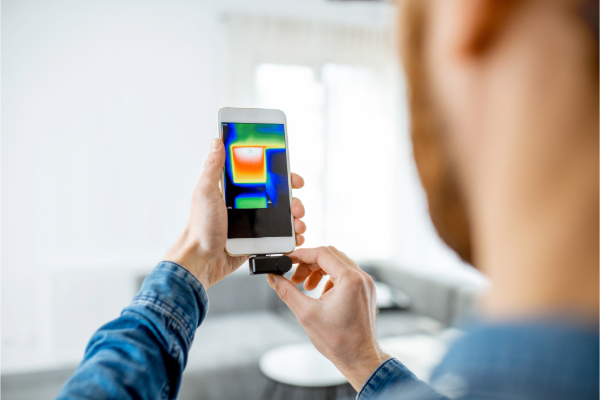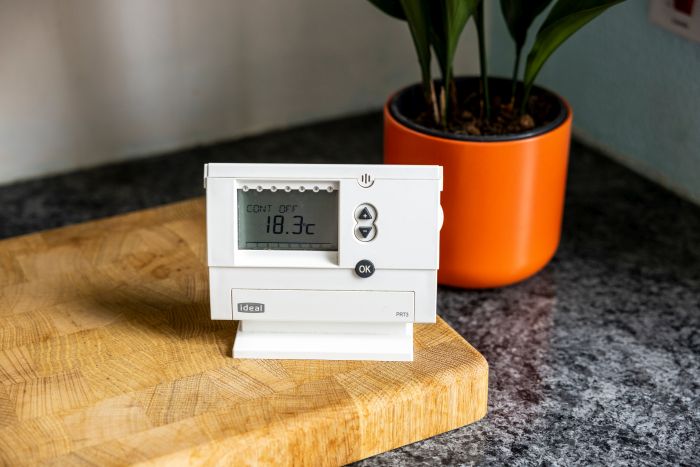Infrared heating panels
Infrared heating panels are a type of electric heating. Instead of heating a space, they heat objects directly.

What are infrared heating panels?
Infrared heating panels are a type of electrical heating. Large panels attached to your walls or ceiling provide infrared heat, which is the same kind of heat you get from a toaster. Rather than warming a room, infrared heat warms objects (and people) directly.

How do infrared heating panels work?
Most types of heating warm the air in a room, but infrared heating warms objects directly. This is identical to the infrared heat we receive from sunlight, although at a much lower energy level.
The panels on your walls or ceiling produce infrared heat (longwave radiation), which travels through the air. The infrared hits an object or person, causing its molecules to vibrate. This vibration produces heat.
The panels use electricity. They can either be plugged in at the wall or hardwired into your electricity supply.
Infrared heating panels pros and cons
- Can be more efficient than gas boilers.
- Low carbon solution when used with renewable electricity.
- Safe: the levels of infrared radiation are very low.
- Upfront cost can be relatively expensive.
- No panels on the market can currently provide hot water, so you’ll need a separate system for this.
- Infrared heats the first thing it comes into contact with, so you’ll need to make sure your panels aren’t obstructed.
Infrared heating panels costs and funding
Costs
The cost of infrared heating panels varies significantly, depending on the size and the wattage. An individual panel can range from around £150 – £450. Some models you can install yourself, whilst some companies offer professional installation.
You’ll likely need to pay for installation if you want your panels hardwired into your electricity supply, rather than plugged in at the wall. If you choose to pay for installation, then we’d recommend getting quotes from at least three different installers where possible.
Funding
As far as we’re aware, there’s no current funding initiatives for infrared heating panels. We’ll keep an eye out and update this page if that changes. If you’d like to be notified of any changes to funding, then why not sign up to our monthly newsletter?

How to use infrared heating panels
The most efficient way to use infrared heating panels is with a thermostat. Some panels come with a built-in thermostat, otherwise you’ll need to buy one separately. A thermostat lets you set how warm you want a room to be. Your heating panels will turn on and off to maintain this temperature.
Lots of thermostats also include a programmer which lets you match your heating to your routine. This means you can set different temperatures for different times of day, and your heating will switch on or off to achieve these. For example, you might want your home to be warm when you get up in the morning, but cooler when you leave the house.
With multiple thermostats you can “zone” your heating. This means that you can choose different temperatures for different rooms. So if there’s a room you don’t use much during the day, you might choose to keep this at a low temperature, whilst setting a higher temperature in the rooms that you use regularly.
Lots of thermostats can also be linked up to home WiFi. This lets you control your panel heaters through an app on your smartphone or computer.
Useful pages
Is this page useful?